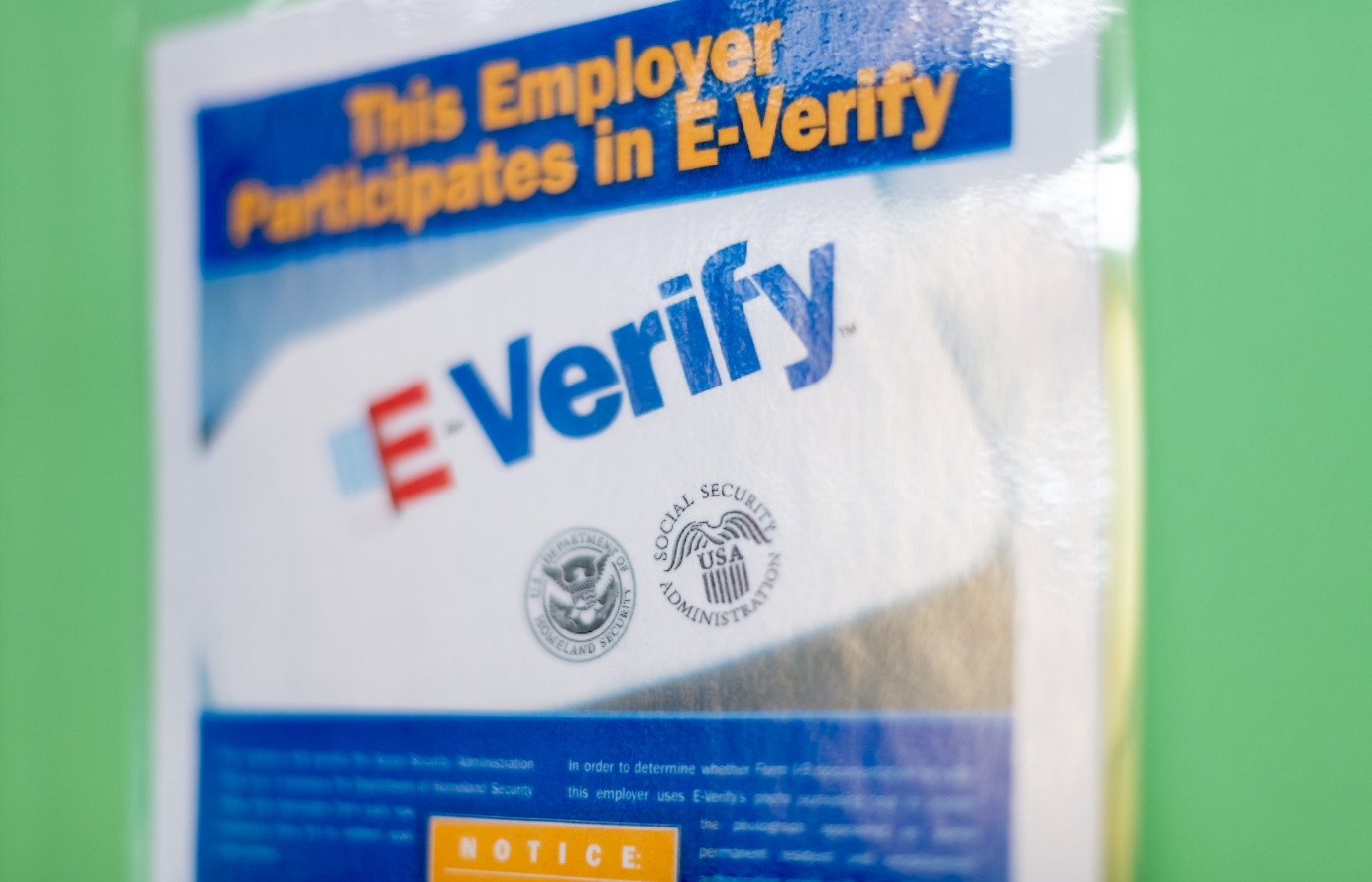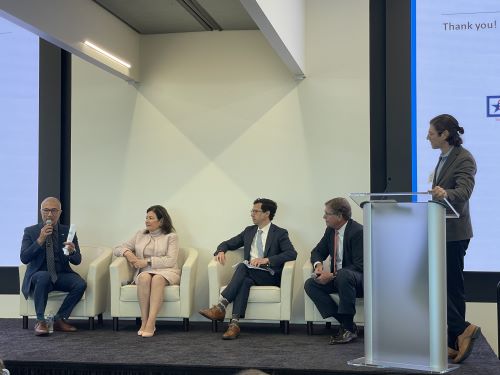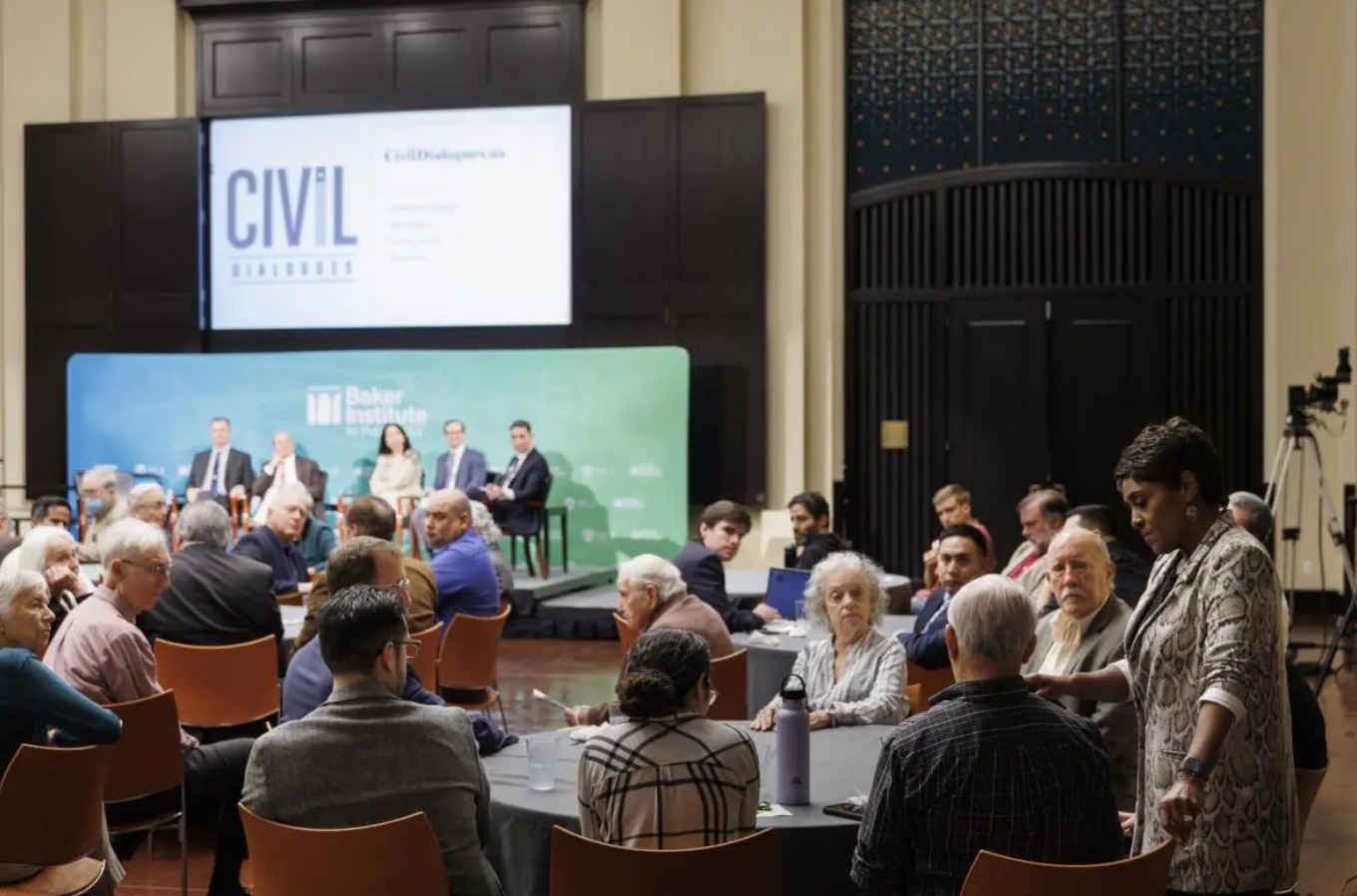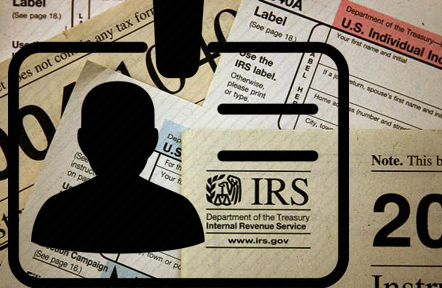Identity Loans and Identity Theft: Illegal Immigrants in a Restricted Labor Market
 Since the 1986 Immigration Reform and Control Act (IRCA) came into force, it has been against the law for illegal immigrants to work in the United States. Prior to IRCA, they could be deported if discovered by the Immigration and Naturalization Service (INS), that era’s federal immigration agency, but illegal immigrants were not barred from working. For decades prior to 1986, immigration restrictionists and labor unions had tried to make illegal immigrant employment illegal. Prior to IRCA, the INS even instituted the Texas Proviso whereby they wouldn’t enforce harboring or other statutes against employers of illegal immigrants. IRCA ended this arrangement in 1986.
Since the 1986 Immigration Reform and Control Act (IRCA) came into force, it has been against the law for illegal immigrants to work in the United States. Prior to IRCA, they could be deported if discovered by the Immigration and Naturalization Service (INS), that era’s federal immigration agency, but illegal immigrants were not barred from working. For decades prior to 1986, immigration restrictionists and labor unions had tried to make illegal immigrant employment illegal. Prior to IRCA, the INS even instituted the Texas Proviso whereby they wouldn’t enforce harboring or other statutes against employers of illegal immigrants. IRCA ended this arrangement in 1986.
Since November 6, 1986, everybody seeking a job in the United States must fill out an I-9 form at the point of hire to supposedly prove that they are legally allowed to work in the United States. The new hire must show the employer some documents that corroborate the information on the I-9 form, copies of which the employer must keep on site. This requirement has had multiple negative effects.
The first is that it has decreased the wages of illegal immigrants relative to similarly skilled native-born Americans and legal immigrants by diminishing employer demand for their labor. While this is the point of the I-9 check, it is disingenuous of immigration restrictionists to complain about slow immigrant wage convergence when the I-9 regulations that they support are slowing down that convergence for lower-skilled immigrants.
The second negative effect of IRCA is its creation of a large-scale black market for legal documents in the United States. The value of document fraud increased after ICRA because false documents became necessary for illegal immigrants to fill out an I-9 form to work. Since working is the main reason immigrants, especially illegal immigrants, come to the United States, a growing cottage industry of black market identity documents rose to serve them.
This is where identity theft enters the immigration debate. Many illegal immigrants in the United States work and fill out I-9 forms which many voters think means that they must have stolen somebody’s identity and committed a felony. That’s not necessarily true. Aggravated identity theft is a felony that requires the user to knowingly use another person’s identity, but falsely using another person’s identity is a misdemeanor. Merely purchasing an identity from another person and using that for employment purposes doesn’t count as a felony because the purchaser does not know if it belonged to somebody else because it could be fake.
In popular terminology, as opposed to legal terminology, anybody who uses somebody else’s identification without the owner’s permission commits identity theft. This makes it complicated for supporters of legalization to argue that illegal immigrants who are otherwise law-abiding should have a path to citizenship because, if they have worked on an I-9, then there is a good chance that they’ve worked using somebody else’s identity.
The Internal Revenue Service (IRS) further complicated this issue by granting Individual Taxpayer Identification Numbers (ITIN) to foreigners ineligible for a Social Security Number (SSN). ITINs are available for foreign investors, spouses of foreign workers, and others so they can pay taxes. Illegal immigrants understandably take advantage of the ITIN. A recent government report suggests that about 1.2 million ITIN filers are also using a name or SSN that does not match their ITIN.
Most illegal immigrant use of other people’s identities is likely for employment purposes. Rarely does it result in truly awful crimes. Virtually all employment-related identity theft would disappear if illegal immigrants were legalized and future immigrant flows were liberalized because immigrants wouldn’t have to steal identities in order to work. The best solution would be to remove the I-9 requirement entirely and shrink, or separate, the SSN or other government-issued identification requirements for employment authorization. If there is no reason to steal SSNs for employment then nobody will steal them for employment. But those arguments only get legalization proponents so far against people who are disgusted by rampant employment-related identity theft.
Many of the so-called instances of employment-related identity theft committed by illegal immigrants are actually identity loans where the owner of a government-issued identity allows the illegal immigrant worker to use that legal identity for work purposes. There are few statistics available to estimate the frequency of identity loans but they appear to be commonplace. One survey-based paper found that immigrant farmworkers estimated that 50 to 70 percent of their coworkers used loaned documents whose procurement is usually arranged by a supervisor, friend, colleague, or a fourth party.
Other family members frequently supply the loaned identities. For example, many unlawful immigrants use the SSNs of parents, children, or other family members who either voluntary lend the information or are not using it – a form of family wealth. Oftentimes, the actual owner of the identity is outside of the country or too young to work. A good example of this is the story of Manuel:
An unauthorized immigrant from Zacatecas, Manuel had first settled in the San Francisco Bay Area and sought work in construction. However, because the construction industry in San Francisco is unionized, Manuel had discovered that potential employers would check his I-9 form with E-Verify, a federal database that matches Social Security cards and names. So Manuel contacted an uncle in Zacatecas who had obtained a Social Security card in the early 1970s when he had first migrated to California—to ask about using his card. His uncle, who had returned to Mexico permanently with no plans to reenter the United States, agreed.
When next applying for work, Manuel presented his uncle’s Social Security card and a fake legal permanent resident card (green card) bearing his uncle’s name—which he had purchased from a local vendor—to the employer. The employer, in turn, was able to verify that the SSN was on file with the Social Security Administration (SSA) and that it matched the uncle’s name. This ploy allowed Manuel the luxury of finding work in a sector of the economy normally closed to the unauthorized. In entering a unionized construction job, Manuel benefited from more comfortable work conditions and employer-provided benefits. Moreover, in contrast to what he had earned in agriculture—typically about $25,000 a year—Manuel was able to earn $60,000 to $80,000 a year in construction.
Some researchers claim that the lending of identity is a form of community-wide mutual assistance or insurance but the family property explanation is better.
Sometimes, the fourth party identity-loaner will loan his or her own identity so that the taxes paid by the illegal immigrant worker will contribute to welfare fraud. In this scenario, taxes paid by the illegal immigrant identity-borrower count toward government benefits like unemployment or Social Security for the identity owner. Sometimes, the American identity owner even pays the illegal immigrant to work with their identity in order to commit welfare fraud. This brief description explains how the scam works:
Elisabeta remembers that she had just arrived in the United States when her neighbor, Amparo, approached her to ask whether Elisabeta would “work” her papers (trabajar sus papeles). At the time, Elisabeta was barely 15 and was a single girl seeking work in agriculture, an industry dominated by males. She had come to the United States to earn money to send to her recently widowed mother, who lived with Elisabeta’s older sisters on the family farm in rural Jalisco, Mexico. Yet before she could get to work, she needed to procure the identity documents—a fake Social Security card and a “green card” (or resident alien visa)—that would allow her to find a job. She lacked the cash necessary to purchase a set of fake papers at a flea market or from a fly-by-night document mill. Thus, Elisabeta faced the kind of dilemma that plagues many unauthorized new arrivals: Without “papers,” she could not find employment. And yet, without employment, how could she possibly purchase “papers”?
Amparo drew on her knowledge of Elisabeta’s situation when she made the case for the loan. “Why don’t you just work my papers?” she had proposed. “Because being recién llegada (recently arrived) and all, where will you possibly get them otherwise?”
Amparo herself was in her midfifties. She walked slowly and stiffly. As she grew older, she told Elisabeta, working in the fields made her back hurt. So Amparo offered Elisabeta what seemed to the latter like a bargain. If Elisabeta used Amparo’s mica (green card) and seguro (Social Security number) to find work, Amparo would pay her an additional $100 for every $1,000 that she earned.
The “tip” that Amparo offered to entice Elisabeta to “work” her documents is the kind of financial incentive that often accompanies document exchange in California’s Central Valley. While the exchange appeared advantageous to Elisabeta, Amparo herself also stood to benefit. A person’s unemployment payments are based on the calendar quarter within the previous 12-month period during which he or she earned the highest amount. Thus, while Elisabeta would gain identity documents that would allow her to find work, her work history would fatten Amparo’s unemployment checks at the end of the season.
A preliminary analysis of law enforcement press releases, far from a precise measure, reveals a few patterns that should be the basis for future research. For instance, when non-citizen immigrants commit identity theft, they mostly do so for employment purposes. When American citizens commit identity theft, they usually do so in order to commit welfare fraud, financial fraud, or in order to sell identities to illegal immigrants either on their own or as part of a conspiracy that involves the immigrants themselves. For example, some of the instances of identity theft committed by U.S. citizens were committed to steal wages, create fake schools to supply “student” visas, marriage fraud, H1-B visa fraud, visa fraud and harboring, manufacturing and selling fraudulent identities, EB-5 visa fraud, defrauding migrant clients, bribery, and illegal issuing of driver’s licenses, among others. In many of these cases, immigrants would purchase the identities but U.S. citizen intermediaries initially stole them.
Borrowing another person’s identity with the owner’s permission for employment purposes can still be a crime but it is a lot less egregious than taking somebody’s identity without their permission. Working in the United States is extremely valuable but government immigration laws make it very difficult for foreigners to do so lawfully. Most illegal immigrants have to work on a legal or false identity in order to earn a wage, which incentivizes identity loans and identity theft. Although researchers need to conduct more detailed quantitative and qualitative work on identity loans borrowed and identity theft committed by illegal immigrants, it is a more nuanced issue with fewer and different victims than many commentators realize.
Special thanks to Jen Sidorova for her help on this blog post. Originally published on the Cato Institute.








